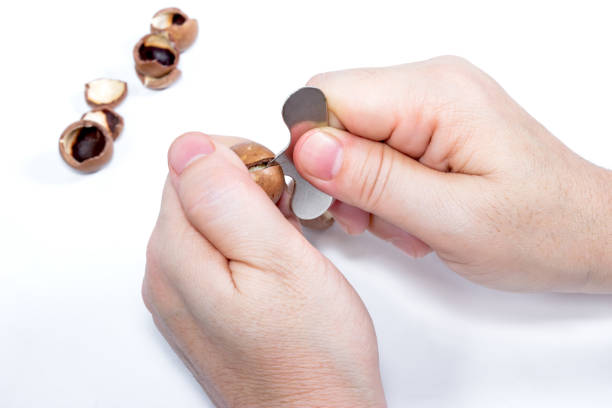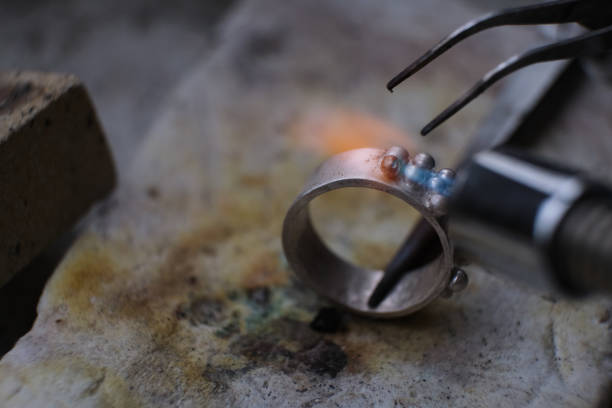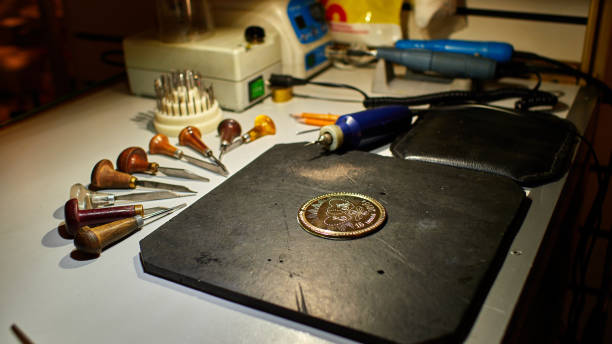How to fix jewelry that has turned copper

Discovering that your favorite piece of jewelry has developed a copper hue can be disheartening. This discoloration, often an unexpected transition to green or black, is a common problem for many jewelry enthusiasts. The main topic of this article is to provide insights and solutions for restoring your treasured items to their former glory. Whether your copper bracelets have lost their luster or your other metals are showing signs of tarnish, there’s a variety of methods to resuscitate their appearance. But before you worry, it’s helpful to know that this turning of color does not mean the end of your jewelry’s life; with the right approach, you can reverse these changes and prevent them from reoccurring.
Understanding the Cause
The Science Behind Tarnishing
The primary reason jewelry turns colors, especially turning green or black, is due to a chemical reaction known as tarnishing. Copper jewelry, when exposed to air and moisture, reacts to form copper oxide, which gives that undesirable darkened color. This reaction could also involve other compounds like copper carbonate, which typically turns it green — the infamous green color on skin seen from wearing copper rings or bracelets.
Common Culprits of Discoloration
This tarnishing process could be accelerated by a few factors:
- Contact with skin oils which may cause reactions with the metal.
- Exposure to certain environments such as high humidity or pollution, which could cause even more rapid tarnishing.
When your jewelry turns green, it’s not just a sign of tarnishing, but it might also indicate that the metal is reacting with acids in your skin. This reaction is completely normal and should not be cause for alarm. It’s important to note that a green stain on your skin from wearing copper is harmless and washes off easily.
How different materials react to these factors can also be intriguing. Jewelry composed of pure gold or platinum might not tarnish, while silver and copper are more prone to such reactions. The presence of these metals in an alloy form, like in sterling silver, which contains other metals, means that tarnishing can still occur, albeit at a slower rate.

Preventative Measures
Daily Habits to Protect Your Jewelry
To keep your beloved pieces as pristine as possible, adopting proactive measures is critical. A few simple habits can make a world of difference:
- Always wipe jewelry with a dry cloth after wearing it to remove oils and sweat that might cause tarnish.
- Keep your pieces away from chemicals such as perfumes and lotions, which could accelerate the tarnishing process.
Proper Storage Solutions
Proper storage is as vital as the daily care. You should store your jewelry in a cool, dry place to avoid exposure to excessive moisture, which can trigger tarnishing. Anti-tarnish bags or cloths can be especially beneficial for this purpose, as they are designed to absorb sulfur compounds in the air that might tarnish your jewelry. Below is a table featuring different storage solutions for various jewelry types:
| Storage Solution | Jewelry Type | Benefits |
|---|---|---|
| Anti-tarnish bags | Silver, Copper | Absorbs air pollutants, reduces tarnishing |
| Jewelry box with lining | All types | Prevents scratches and physical damage |
| Individual compartments | Beaded, delicate pieces | Keeps items from tangling and rubbing |
| Sealed containers | Copper bracelets, Rings | Limits air and moisture exposure |
Cleaning and Care Tips
It’s not all about how you store your pieces, but also how you care for them. Regularly cleaning your jewelry with a polishing cloth can help in removing tarnish and restoring shine. Certain cleaners are formulated for use on specific metals; for instance, using a cleaner meant specifically for silver on a copper piece might not yield the best results. Knowing the correct cleaning materials for your jewelry is vital in maintaining its original appearance without causing accidental damage.

DIY Solutions for Tarnished Jewelry
Home Remedies to Restore Shine
If your jewelry has turned copper and you’re keen on a hands-on approach, some household items can be excellent for removing tarnish. Here are two simple methods:
- Baking Soda Method:
- Create a paste using baking soda and water.
- Apply the paste to the tarnished jewelry with a soft cloth, gently rubbing it on the surface.
- Rinse the jewelry under warm water, then dry it with a clean, dry cloth.
- Baking soda is mild, so it does not scratch the metal but is effective enough to remove the tarnish.
- White Vinegar Solution:
- Soak the copper jewelry in a mixture of white vinegar and salt.
- After a few hours, remove the jewelry and rinse thoroughly.
- Dry the piece carefully with a soft, dry cloth.
- The acidity in the vinegar helps in breaking down the tarnish, making it easier to polish it off.
It’s important to be gentle when using these methods, as rough handling could cause scratches or damage to your pieces.
Using Commercial Cleaners
For those who might not be inclined towards do-it-yourself methods, commercial cleaners can be an easy and effective alternative. Various solutions are designed for cleaning and polishing copper jewelry, often requiring you to simply soak the item and then rinse it off. However, it’s paramount to follow the product’s instructions precisely to avoid damaging your jewelry.
Precautionary Measures When Using Chemicals
When using any chemical solution, even over-the-counter jewelry cleaners, there are important precautions one must take:
- Always wear gloves to protect your skin from irritation.
- Work in a well-ventilated area to avoid inhaling any fumes.
- Avoid using abrasives that could scratch the surface of your jewelry.
- Test the cleaner on a small, inconspicuous area of the piece first to ensure it does not react adversely.
Professional Restoration
When to Seek Professional Help
Sometimes, despite our best efforts, the tarnish on our jewelry is too stubborn, or the damage might be beyond what simple cleaning can fix. In such cases, it’s wise to seek professional help. Jewelers have the tools and expertise to restore tarnished jewelry without damaging it further.
Services Offered by Jewelers
Professional jewelers offer a range of services, from deep cleaning and polishing to repairs and protective coating applications. They might also provide advice on maintaining your jewelry’s luster at home.
Costs vs Benefits of Professional Restoration
While professional restoration might come with a cost, it is often worth the investment, especially for high-value or sentimental pieces. Professionals ensure that your jewelry is not only visually restored but also structurally sound, which can prolong its lifespan and enhance its beauty.

Conclusion
In conclusion, while it may be concerning to see your beloved jewelry turn a copper color, it is a common issue with several feasible solutions. From implementing preventative measures to trying out home remedies or opting for professional services, there are various ways to salvage and restore your tarnished pieces. By maintaining a good care routine and taking preventive steps, you can keep your jewelry from turning colors and maintain its beauty for years to come. Remember that the key is consistent care and early intervention. With this comprehensive guide, your jewelry will once again sparkle and shine as it did when you first cherished it.
FAQs
Q1: Can all types of jewelry be treated at home?
A1: While many pieces of jewelry can be treated with home remedies, there are exceptions. Jewelry with delicate gemstones or intricate designs might require professional cleaning to avoid damage. Always use caution and if in doubt, consult a professional.
Q2: How often should I clean my jewelry?
A2: The frequency of cleaning depends on how often you wear the jewelry and your activities while wearing it. As a general rule, a gentle cleaning once a month is sufficient to prevent tarnish, but items worn daily may require more frequent attention.
Q3: What should I do if DIY methods don’t work?
A3: If home remedies fail to remove tarnish, it’s best to consult a professional jeweler. They have the expertise and the right equipment to handle stubborn cases without causing harm to your pieces.
Q4: Is it safe to use toothpaste to clean tarnished jewelry?
A4: Toothpaste is often suggested as a cleaning agent for jewelry but use it with caution. It contains abrasives that can scratch the metal, especially on softer materials like gold. If you do decide to use it, choose a toothpaste that does not contain whitening agents or silica and use a soft-bristled brush.
Q5: How can I tell if my jewelry is beyond repair?
A5: Jewelry is usually considered beyond repair if it has structural damage that cannot be fixed, such as severe cracks or breaks in the metal. A professional jeweler can assess the damage and advise whether restoration is possible or not.




